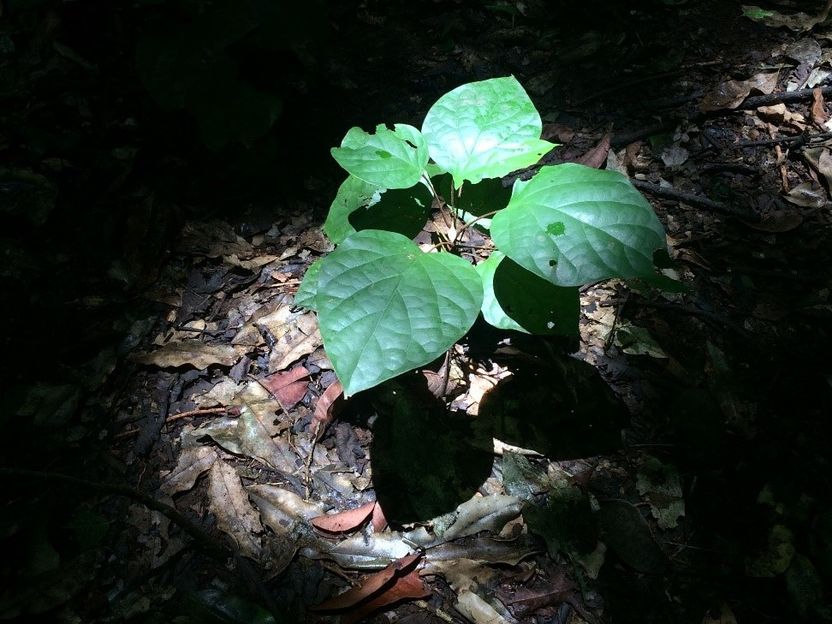Crop plants can adapt to growing in shady conditions
Advertisement
The study, led by researchers from the Institute of Molecular and Cellular biology of plants (CSIC-UPV), will allow optimizing crops in greenhouses, among other applications.

The drop in plant photosynthetic pigment levels is part of a mechanism that adapts the photosynthetic machinery to function with less light, thus anticipating a possible future in the shade.
Manuel Rodríguez
After detecting the proximity of vegetation, some plants, including most of the crops we eat, are able to anticipate shady conditions in their environment and modify their structure and growth to thrive in less light. This has been verified by a research group from the Institute of Molecular and Cellular Biology of Plants (IBMCP), a joint centre of the Spanish National Research Council (CSIC) and the Polytechnic University of Valencia, in collaboration with the Centre for Research in Agricultural Genomics (CRAG) in Barcelona. The researchers observed that the drop in the levels of photosynthetic pigments in plants is part of a mechanism that allows them to adapt to live with less light, thus anticipating a possible future in the shade. The results are published in the journal Plant Physiology.
Plants use sunlight to convert atmospheric carbon dioxide into food through photosynthesis. Thus, plants often compete with each other for access to this vital source of energy. In forests or densely planted fields, it is common for some plants to shade out others, restricting the amount of light that reaches them. Since less light means less energy, evolution has endowed plants with mechanisms to detect the proximity of other potential competitors for light before they even shade them out, and to respond appropriately.
To perform photosynthesis, plants absorb specific regions of the electromagnetic spectrum, blue and red, and let through or reflect the far-red. Therefore, when sunlight filters through the leaves, it is impoverished in blue and red (which is absorbed and used for photosynthesis) and enriched in far-red. These changes in light quality are the signal that other plants recognize as being generated by the proximity of neighboring plants (and thus competition for resources) and use to trigger a series of responses known as shade flight syndrome (SAS).
Anticipating a shadow future
The most studied response to this syndrome is the lengthening of the plant's stem, which allows it to outgrow neighboring plants and reach the light sooner. SAS also causes a decrease in the levels of chlorophylls and other pigments produced by photosynthesis, but until now the reason for this response was unknown. Now, a team from the Institute of Molecular and Cellular Biology of Plants (IBMCP) in Valencia and the Centre for Research in Agricultural Genomics (CRAG) in Barcelona has discovered that the drop in the levels of photosynthetic pigments is part of a mechanism that adapts the photosynthetic machinery to function with less light, thus anticipating a possible future in the shade.
The teams led by CSIC researchers at the IBMCP Jaume Martínez García and Manuel Rodríguez Concepción studied the response to changes in the quality and quantity of light of different species of the Brassicaceae, a family that includes important crops such as cabbage, cauliflower, broccoli, rape, radish and mustard. Thus, they classified the species into two groups: shade-avoiding and shade-tolerant. The former grew better in high light intensities and elongated greatly when they perceived the signal of plant proximity. The shade-tolerant ones, however, hardly elongated at all with this signal and were better adapted to living in low light.
Optimizing growth in a sustainable way
In addition, they observed that when shade-avoiding species were exposed to the signal informing them of vegetation proximity and then grew in lower light, their photosynthetic efficiency was better than that of plants that had not previously been exposed to this signal. "We observed that this was due not only to a decrease in the levels of photosynthetic pigments, but also to changes in the expression of genes and chloroplast structures related to photosynthesis," explains Manuel Rodríguez. In addition, the researchers found that mutant plants, unable to translate the proximity signal of other plants, and shade-tolerant species did not show this adaptive response.
Most of the crops that feed us are plant species that like the sun and avoid shade, so knowing how they respond to proximity signals provides valuable information to optimize their growth in a sustainable way. For Jaume Martínez, "exposure to lights that simulate the proximity signal could improve the performance of greenhouse crops by growing them with less light, which would save electricity costs".
Note: This article has been translated using a computer system without human intervention. LUMITOS offers these automatic translations to present a wider range of current news. Since this article has been translated with automatic translation, it is possible that it contains errors in vocabulary, syntax or grammar. The original article in Spanish can be found here.
Original publication
Light signals generated by vegetation shade facilitate acclimation to low light in shade-avoider plants Morelli, L., Paulisic, S., Qin, W., Iglesias-Sanchez, A., Roig-Villanova, I., Florez-Sarasa, I., Rodriguez-Concepción, M., Martínez-García, J.F. Light signals generated by vegetation shade facilitate acclimation to low light in shade-avoider plants. Plant Physiology 2021.



























































